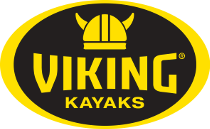Planning for offshore kayak fishing trips
6:17PM 30th Apr 14
There and back to see how far it is!
This summer has seen an increase in numbers of kayak anglers interested in paddling farther afield. For some it’s the lure of offshore tuna, for others it’s reaching some of the more remote coastal and offshore island locations. Part of the reason is the growing availability of new performance orientated kayaks allowing greater endurance and comfort. Longer and sleeker, these craft have characteristics allowing them to glide over the ocean and eat up the distance with less effort.
I’m also getting enquiry from paddlers setting up to target deep water deep water specie late winter and early next spring. Their goal is to kit their kayaks and become paddle fit for targeting the likes of hapuku and blue nose on paddle-from-shore missions. The idea is to carry out these expeditions under their own steam rather than utilize larger motherships. Much of this enquiry is based around finding out what is necessary to stay comfortable and safe when potentially such a long way from home.
On a purely personal note, though I’m writing this under the heading of paddling offshore I apply everything discussed here to all my kayaking. I don’t differentiate between sheltered or inshore kayak fishing and those trips taking me much further afield. I believe it’s much easier to establish habits and consistently apply them, but even more importantly, I firmly believe it is good practice to have as many safety and performance boxes ticked every time you’re on the water.
So first a quick recap: why paddle these sometimes considerable distances? Part of it is the challenge, partly it’s the adventure, and sometimes it’s because that’s what it takes to chase down our quarry. Take a recent tuna trip to Taranaki as an example. Milkey and I headed to Cape Egmont and met Dave, a South Taranaki local at our launch point. Our intention was to head towards the 40m mark and see if we could put a few albacore on ice. Once out there we found all the birds working west and south, so we headed off in pursuit.
Set up for paddling out wide, note the spare paddle and 3 litre drink bladder on the foredeck (and the camera booms the Naki crew reckoned needed scaffolding certification!) Image courtesy of Milkey
What followed was glorious tuna mayhem as we worked our way farther off the coast following the birds. Multiple strikes, straightened hooks, and constant action kept us entertained amongst the swells until it was time to turn for home. Using the forecasted wind and swell to our advantage we then worked our way back to the coast, and by the time we landed we had covered more than 30km for the mornings paddling.
The attraction was the fishing, but there was far more to the trip: the fun of sliding down indigo blue swells with the Mt Taranaki as a backdrop, visits by albatross with their wing tips almost trailing in the water, and of course the frisson of excitement created as the coast disappears from view behind the swells. This heightens awareness, and the feeling of remoteness adds to the adventure. This is a feeling well understood by those of us addicted to offshore paddling.
This trip wide of Cape Egmont is a classic example of where some kayakers I’m regularly talking with want to take their paddling experience. Outlined below are four of the key points I’ve found that have made a massive difference to my enjoyment on the water. This isn’t a complete list, nor is it a list of essential safety kit. It doesn’t describe trip planning and setting contingencies, it’s simply an introduction to longer duration paddling that will be added to over the next few months.
Where to start?
The most common question I’m asked is: “this offshore stuff sounds exciting, but how do I find out if it’s for me?” I find the easiest way to begin is to extend your inshore fishing trips further along the coast. This serves two purposes: you get a chance to assess if you’ll find longer trips in the saddle comfortable, and you will also gain necessary fitness. These are essential building blocks before attempting to paddle offshore unassisted.
While useful for navigation, a sounder still has a primary role to play finding fish offshore - in this case spotting bait balls several kilometers off the coast with skipjack and albacore lurking above
I find the trick here is to actually plan each mission along the coast so there are particular destinations to reach. If I don’t do this I’m often distracted by fishing and never get to cover the distances I intend to. Remember, this isn’t just about catching fish; it’s also about checking comfort and gaining fitness. As a general rule I throw a pattern of lures out the back and head for the furthest point, marking any fish sign as I go. Once I’ve covered the necessary distance I turn and fish all the spots I’ve marked as I make my way back home.
Once some of these longer trips have been completed, and with the kayak appropriately rigged, trips further offshore can be contemplated. The keys here are to use the weather to your advantage (have the conditions help push you home), make sure you have a suitably fit paddling companion so you aren’t attempting your first missions on your own, and to have someone on shore maintaining a watch for the duration of your trip. This way, if you get into trouble and can’t raise the alarm someone else will be able to do it for you.
Comfort and paddling distances
Having had a long term passion for extended duration paddles it’s often been interesting to sit back and reminisce over past exploits. Something that keeps cropping up with my own paddling is the direct correlation between how comfortable a kayak is, and the time and distances I cover on the water. Each time I’ve owned a kayak that I found particularly comfortable I ended up pushing boundaries as I searched for new fishing grounds.
Conversely, when I was less than perfectly comfortable on a kayak my trips tended to shorten up. Those craft never generally stayed with me long as there are few experiences more miserable than trying to ease your position in the close confines of a kayak, and knowing there’s still a lot of paddling to go before staggering onto the beach. Fortunately kayak design is moving ahead with some of the best improvements being made to seating and cockpit layout for better comfort.
For those looking to enhance an existing kayaks comfort there are a range of accessory seating options offering a variety of padding densities and thicknesses. These can offer several benefits: softer or deeper padding eases pressure points, and the raised position of a thicker seat base can change leg and hip angles for greater comfort. But like many things boating this comes at a price, the raised center of gravity of having a higher seat will make any kayak less stable. Be sure to test any change in the way your kayak handles rougher conditions before committing to longer paddles with a new seat.
Staying comfortable and hydrated is essential to successful long duration paddles. Accessory seating used appropriately and bladder based hydration systems are the key.
Maintaining hydration
One of the most overlooked but critically important considerations for any long distance paddler is the need for proper hydration. Most of us find it easy to think about important safety kit such as a VHF radio, PLB’s (Personal Locator Beacons), strobe lights, flares, etc., but somehow it’s easy to overlook the need to drink enough fluids. Aside from slowing your recovery after a big paddle, dehydration can have a negative impact on your ability to make good decisions. It also leads to exhaustion and places you at much greater risk of serious problems like hypothermia, even during warmer conditions.
I’ve found the secret to staying properly hydrated is to make having a drink easy. I know this sounds simplistic, but speaking from personal experience, interrupting my paddling to lean forward and grab a drink bottle from the ends of my foot wells or out of the center well means I’ll often ignore the thirst and carry on paddling.
I’ve learnt to my cost this isn’t cool, and your hydration system needs to be set up so it’s quick and effortless to take regular small drinks any time you need to. I find using drink bladders with the straws mounted within easy reach to be the secret. This means any disruption to my paddling rhythm is minimized and I find it easy to sip small drinks often to maintain my hydration.
We haven’t discussed essential safety kit here, but it should never be forgotten. VHF radios, mobile phone, and an extremely compact PLB with in-built GPS makes it easy to stay in touch or raise the alarm.
Navigation
Heading off on long journeys, whether paddling out wide or along the coast, is one time where I consider a chart plotter almost indispensable. Aside from the obvious advantages of being able to see where you are and where you’re going, a GPS plot makes it simple to monitor your progress. This is important as it’s often difficult to assess the influence of currents and local conditions. Using a GPS chart plot gives you all the navigation tools required to pick the most efficient course, even if this means paddling out of your way to get there faster!
By using wind and waves to your advantage it’s often possible to increase your speed to the point where it’s far more efficient to stay with them over a longer distance (take the long way home) and still arrive sooner than paddling a shorter more direct route. When conditions are working against you there can also be huge benefit going well out of your way if doing so allows you to gain shelter for calmer and faster paddling. Choosing not to take the rough stuff head on can also make paddling much easier, and this can ultimately give better endurance for covering longer distances safely.
Sometimes it’s the little things that can make a huge difference! The simple little compass can indicate the way home if all your electronics have failed, and the roll of duct tape has a myriad of uses from first aid to kayak repair.
Of course there’s another situation where having a GPS plot is invaluable: paddling in the dark. Many of the offshore spots I’ve been to require a predawn launch, with the return trip also in the dark. This is especially common on hapuku missions during winter months. In addition, the further we are from landmarks the less precise they usually become. Having a spot precisely marked can save a huge amount of paddling and searching.









